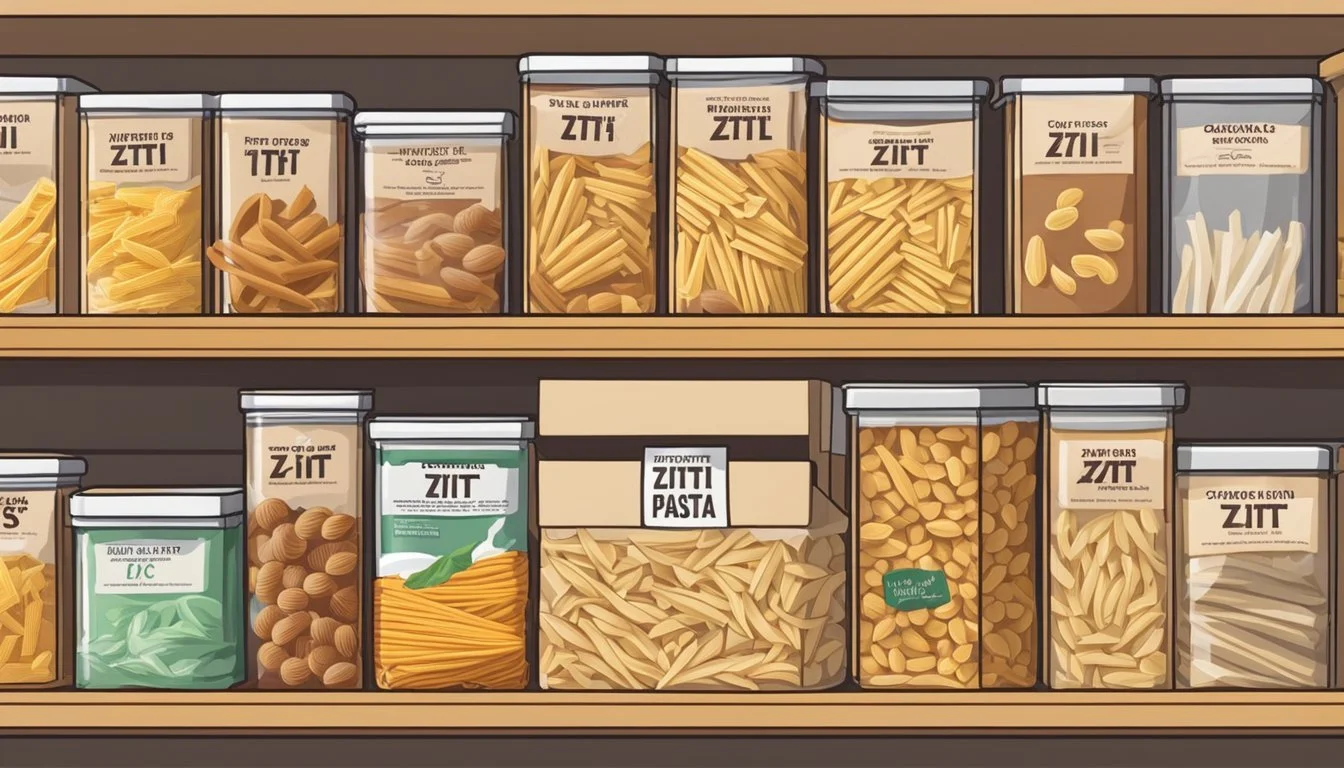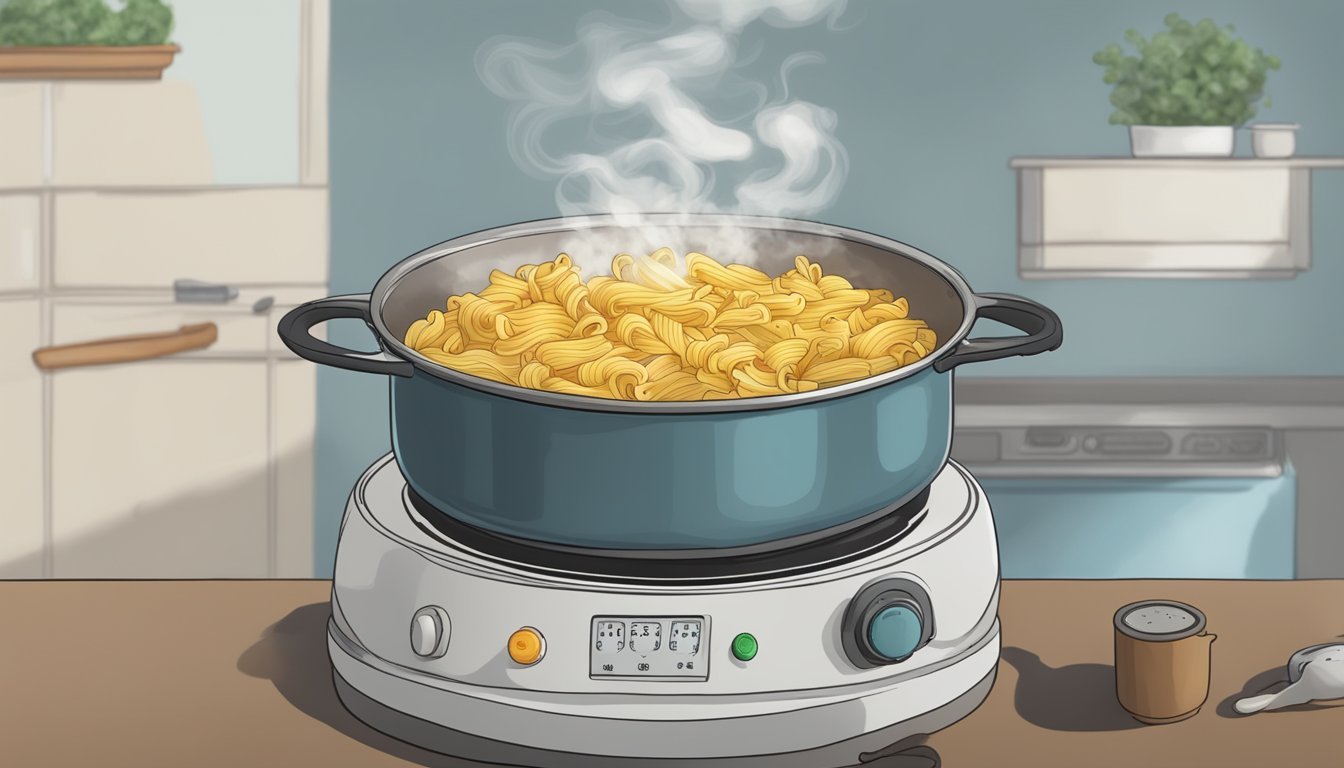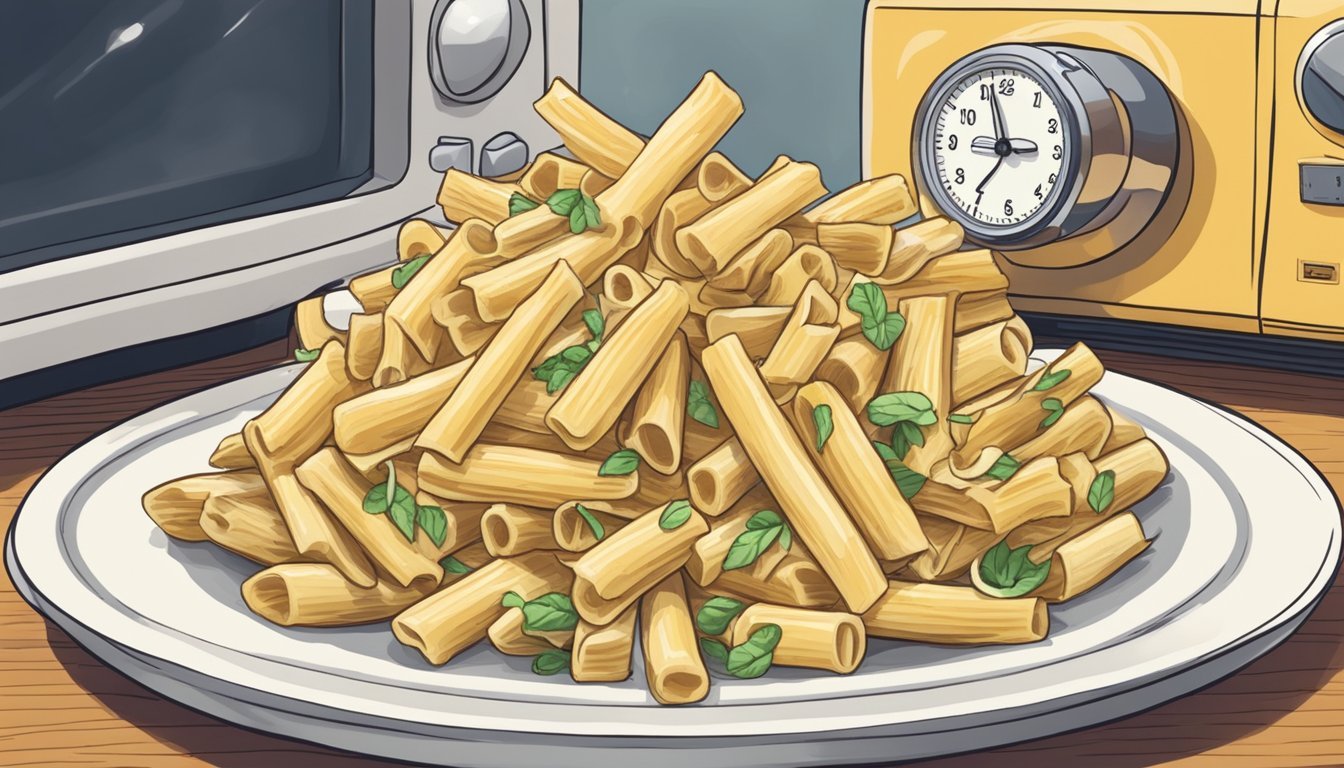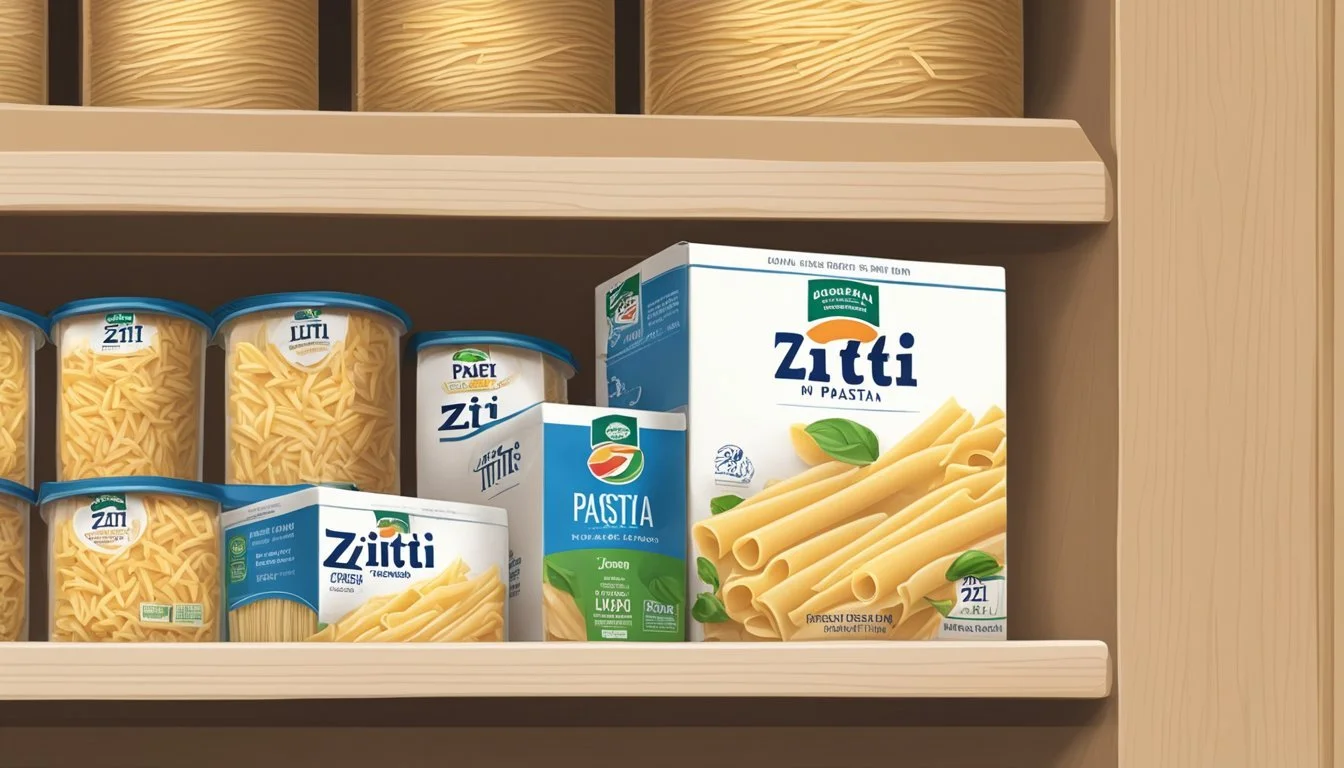How Long Does Ziti Pasta Last?
Shelf Life and Storage Tips
Ziti pasta , named for its tube-like shape, is a popular choice for many pasta (What wine goes well with pasta?) dishes, from simple weeknight dinners to elaborate baked ziti creations. The shelf life of this pasta varies depending on whether it is dry or cooked. Dry ziti pasta, stored properly in a pantry, has a considerable shelf life and can last for about two years. Once it is opened, its optimal quality is typically maintained for around one year.
Cooked ziti, however, has a shorter lifespan. In the refrigerator, it is best consumed within three to five days. The key to extending its freshness and safety is proper storage; cooked ziti should be refrigerated within two hours of cooking. When stored in an airtight container, the risk of bacterial growth is reduced, maintaining the quality of the dish.
For those who prefer making pasta dishes (What wine goes well with pasta dishes?) in large quantities, it is good to know that ziti can also be frozen. Freezing can further extend its edibility, allowing cooked ziti to last for one to two months. Whether it's tossed with marinara, layered with cheese and meat for a baked ziti, or simply enjoyed with olive oil and herbs, understanding the shelf life of ziti pasta is crucial in ensuring both safety and taste.
Understanding Ziti Pasta
Ziti pasta is a traditional Italian pasta that is best recognized by its long, tube-like shape. The name derives from the Italian word "zito," meaning "bride," as it is customarily served at Sicilian weddings. Made primarily from semolina flour (how long does semolina flour last?) and water, this pasta sometimes includes eggs in its ingredients for a richer flavor.
When preparing ziti, achieving the al dente texture, which translates to 'to the tooth,' is key. This term refers to pasta that is cooked to be firm but not hard. Cooking times vary depending on the specific recipe and oven temperament, but it typically takes between 7 to 10 minutes in boiling water.
In recipes, ziti is a versatile ingredient that can be baked, tossed in sauces, or served in hearty pasta dishes. Its tube-like structure allows it to hold sauces well, making it a favorite for baked pasta dishes such as the beloved Baked Ziti. This quintessential comfort food often features a mix of cheese, sauce, and sometimes ground meats or vegetables, all layered or mixed with the cooked pasta and baked in an oven until bubbly and golden.
Key Ingredient Role in Ziti Pasta Semolina Wheat Base for pasta dough Water Binder for the dough Eggs Optional for richness
One must ensure the pasta is suitably covered or mixed with sauce to prevent it from drying out in the oven. As a staple food, ziti pasta reflects the Italian tradition of incorporating simple yet high-quality ingredients like durum wheat and grains to create a variety of savory dishes loved worldwide.
Shelf Life Fundamentals
When considering the shelf life of ziti pasta, several factors influence its longevity—primarily whether it's dry or cooked. Dry ziti pasta generally maintains quality for 1-2 years at room temperature due to its low moisture content which impedes bacterial growth and spoilage. Storage conditions that are cool, dry, and dark help extend its shelf life. However, cooked ziti pasta should be refrigerated and typically remains safe for consumption and retains freshness for 3-5 days.
Temperature plays a vital role. Dry pasta stored at a consistent and moderate temperature away from direct sunlight preserves quality for longer. Conversely, fluctuations can increase the risk of spoilage.
Moisture is the enemy of dry pasta, as it can encourage mold and bacteria. Containers should be airtight to protect contents against humidity and contaminants. For cooked pasta, a sealed container in the fridge is essential to maintain food safety—preventing both spoilage and odor absorption from other foods.
Mold and Spoilage: Regardless of storage method, if ziti pasta displays signs of mold, or an off smell or appearance, it is considered bad and should not be consumed for health reasons.
Here's a quick reference table summarizing shelf life:
Pasta Type Location Shelf Life Dry Ziti Pasta Pantry 1-2 years Cooked Ziti Pasta Refrigerator 3-5 days
Remember, these time frames are indicative and one should always prioritize food safety and personal health, using their senses as well as guidelines to judge the edibility of pasta.
Storing Cooked Ziti
When storing cooked ziti, one must prioritize safety and quality. It is essential to store the pasta in an airtight container or a sealable plastic bag to preserve its freshness and prevent bacterial growth, which can occur rapidly at temperatures between 40 °F and 140 °F.
In the Fridge:
Place the cooked ziti in the fridge within two hours of cooking to prevent bacteria from developing.
Refrigerated ziti should be consumed within 3 to 5 days to ensure safety and quality.
Preventing Discoloration and Clumping:
To minimize clumping and discoloration of the pasta, one may lightly toss it with a small amount of oil before refrigerating.
Freezing Cooked Ziti:
For extended storage, cooked ziti can be frozen.
Before freezing, ensure the ziti has completely cooled.
Use freezer bags or containers to store the pasta for up to three months for optimal quality.
Thawing and Reheating:
When ready to consume, thaw the frozen ziti in the fridge overnight.
To ensure the quality, avoid reheating ziti multiple times.
By adhering to these guidelines, individuals can ensure their cooked ziti remains a delicious and safe meal option in the short term, while also providing the opportunity for longer-term storage when necessary.
Freezing Ziti Pasta
Freezing ziti pasta, whether it's just the noodle or as part of a baked ziti dish, can prolong its shelf life significantly. Proper preparation before freezing is crucial to maintain quality, and knowing the correct thawing and reheating techniques is essential for safety and taste.
Preparation for Freezing
Before one freezes ziti, they should ensure that the pasta is cooked al dente to prevent it from becoming too soft when thawed. If one is freezing baked ziti, it's advisable to do so in a freezer-safe and oven-safe container to facilitate easy reheating later. For the best quality:
Allow the ziti to cool completely before freezing to prevent condensation, which can lead to freezer burn.
Portion the ziti into servings to avoid thawing more than one intends to use.
Wrap the portions in plastic wrap and then foil, or place in an airtight container to protect against freezer burn and flavor absorption from other foods.
Thawing and Reheating Frozen Ziti
Properly thawing and reheating is just as important as the initial preparation to ensure food safety and quality. Ziti should be:
Thawed in the refrigerator for several hours or overnight to ensure safety. Abrupt temperature changes can lead to food poisoning.
Reheated in the oven at 350°F until it reaches an internal temperature of 165°F for food safety. One can cover it with foil to prevent it from drying out.
If one is in a rush, ziti can be reheated directly from frozen, but additional cooking time will be needed, and one should always check that the internal temperature reaches a safe level.
Use these storage tips and methods to keep the ziti's texture and flavor intact while ensuring that a delicious pasta meal is just a freezer away.
Reheating Options
When reheating leftover ziti pasta, maintaining its texture and quality is key. There are three effective methods to warm up ziti: in the microwave, oven, or on the stovetop. Each method has its unique steps to ensure the pasta remains moist and flavorful.
Microwave:
Step 1: Place the ziti in a microwave-safe dish.
Step 2: Add a splash of water or sauce to maintain moisture.
Step 3: Cover the dish with microwave-safe plastic wrap or a damp towel.
Step 4: Heat on high in increments of 90 seconds, checking and stirring each time to ensure even reheating.
Oven:
Step 1: Preheat the oven to 350°F (175°C).
Step 2: Transfer the ziti to a baking or casserole dish.
Step 3: Sprinkle additional sauce or water if needed to avoid drying out.
Step 4: Cover the dish with foil to preserve moisture and heat evenly.
Step 5: Bake for 40 minutes to an hour, depending on quantity, checking midway through.
Stovetop:
Step 1: Place the ziti in a pan or pot over low-medium heat.
Step 2: Stir in a little sauce or water to reintroduce moisture.
Step 3: Cover with a lid and let it heat slowly, stirring occasionally.
Each method above ensures the ziti reheats thoroughly. The temperature and texture of the pasta can be preserved by adding moisture before heating and using the correct heat settings. Whether choosing the speed of the microwave, the evenness of the oven, or the control of the stovetop, one can ensure their ziti leftovers are just as satisfying as when first prepared.
Tips for Best Quality
To ensure the best quality in your baked ziti, one must be mindful of the ingredients and the storage methods. Quality begins with the selection of ingredients. One should opt for high-quality cheeses like ricotta, mozzarella, and Parmesan. They play a pivotal role in texture and flavor. The cheese should be fresh and, if possible, grated or prepared at home rather than bought pre-shredded to preserve its moisture and flavor.
The meat is equally important, whether one chooses ground beef or ground turkey. The meat should be browned correctly to enhance its taste and texture. Be sure to drain any excess fat after browning for a non-greasy result. Season the meat well with garlic, basil, sage, and black pepper to build depth in the flavor profile.
In terms of seasonings, a pinch of salt can go a long way. Fresh herbs like basil complement the dish remarkably; they should be added at the end of the cooking process to maintain their delicate flavor and brightness.
Here is a brief format for preparing the sauce layer, which is central to keeping baked ziti’s quality:
Start with a good base of olive oil and garlic.
Use either homemade tomato sauce or a high-quality spaghetti sauce.
Season the tomato base with salt and add herbs close to the sauce's completion to keep their flavor intact.
When assembling the dish, it is recommended to mix an egg with the ricotta cheese, enhancing the texture and helping to keep the ricotta from drying out. The layering process should be done with care to distribute meat sauce and cheeses evenly.
Lastly, incorporate a generous layer of shredded mozzarella on top, which will provide a perfectly melted and lightly browned finish. After baking, let the dish rest for a short period before serving to maintain its structure. For storage, keep the ziti tightly covered in the refrigerator; it can maintain its best quality for up to five days. If frozen, ensure it is in an airtight container and consume it within two months for optimal taste.
Baked Ziti Variations
Baked ziti, a hearty casserole loved for its simplicity and comfort, offers a wealth of variation for any cook's repertoire. While the typical baked ziti recipe involves a blend of pasta, cheese, and meat sauce, it is versatile enough to accommodate a range of ingredients and preferences.
Classic Ingredients:
Pasta: Ziti is traditional, but penne or tortellini also work well.
Sauce: A meat-based or plain marinara sauce.
Cheese: Usually ricotta, mozzarella, and Parmesan.
Preparation involves layering these ingredients similarly to lasagna, then baking until bubbly and golden.
Ingredient Swaps:
Pasta: Swap ziti for other tube pastas or even bean-based pasta to add protein and reduce carbs.
Ground Meat: Traditional recipes use ground beef, but cooks can use sausage, turkey, or omit meat entirely for a vegetarian meal.
Cheese: For a richer casserole, add dollops of ricotta or mix in cubes of mozzarella for melty pockets.
Optional Add-Ins:
Vegetables: Stir in spinach, mushrooms, or bell peppers for added nutrients.
Beans: Incorporate white beans or chickpeas as a protein source for a potluck.
Assembly and Cooking:
Assemble your ziti with precision to avoid mushy pasta:
Prep Time: Boil pasta until just shy of al dente.
Layer: Start with a sauce base, add pasta, dollops of cheese, and repeat.
Cook Time: Bake until cheese is molten and edges are crisp.
Careful prep and cook time control will prevent overcooking and retain the pasta's texture, ensuring the casserole reheats beautifully without becoming mushy, perfect for serving as leftovers throughout the week.
Frequently Asked Questions
How long can ziti pasta last in the refrigerator?
Ziti pasta kept in the refrigerator generally lasts for 3-5 days if stored properly in airtight containers or tightly sealed with plastic wrap. Baked ziti containing fresh ingredients should be consumed within 3-4 days, while with added meat or perishables, it is best enjoyed within 2 days for optimal flavor and safety.
What is the best way to reheat leftover ziti pasta?
For reheating, preheat the oven to 375°F (190°C). It's advisable to place the leftover ziti in a baking dish, perhaps lightly sprayed with cooking spray to prevent sticking, and cover with aluminum foil to retain moisture. Reheat until it's thoroughly warmed through, usually about 20 minutes.
Can ziti pasta be frozen for longer storage?
Yes, ziti pasta can be frozen. Both cooked and baked ziti freeze well for up to 2 months. Ensure it's cooled, stored in freezer-safe containers or bags, and labeled. To defrost, transfer it to the refrigerator overnight before reheating.
How can one tell if ziti pasta has gone bad?
If ziti pasta displays a noticeable change in texture, color, or smell, these are signs that it should be discarded. The presence of mold or a sour smell is an immediate indication of spoilage and potential food poisoning risk.
Is it safe to reheat ziti pasta multiple times?
Reheating ziti pasta repeatedly may compromise both the flavor and safety. It should be reheated only once after its initial meal to maintain quality and prevent bacteria growth that can occur with multiple temperature changes.
Conclusion
The shelf life of cooked ziti in the refrigerator typically ranges from 3 to 5 days. To maximize freshness, one should store the pasta in an airtight container or ziplock bag. If the ziti contains meat or other perishable ingredients, consuming it within 2 days is advisable for safety and quality.
For a longer storage solution, cooked ziti can be frozen where it will maintain quality for up to three months. It's essential to thaw frozen pasta in the refrigerator overnight before consumption. Ziti that has been left at room temperature for more than 2 hours should be discarded to avoid the risk of bacterial growth.
Here are key takeaways for storing cooked ziti:
Storage Location Shelf Life Refrigerator 3-5 days Freezer Up to 3 months
Storing ziti properly is crucial to maintain its quality and prevent foodborne illnesses. Signs that ziti has gone bad include changes in texture, color, or smell.
Note: The storage times are general guidelines, and consumers should always exercise caution and check for any signs of spoilage before consumption.









